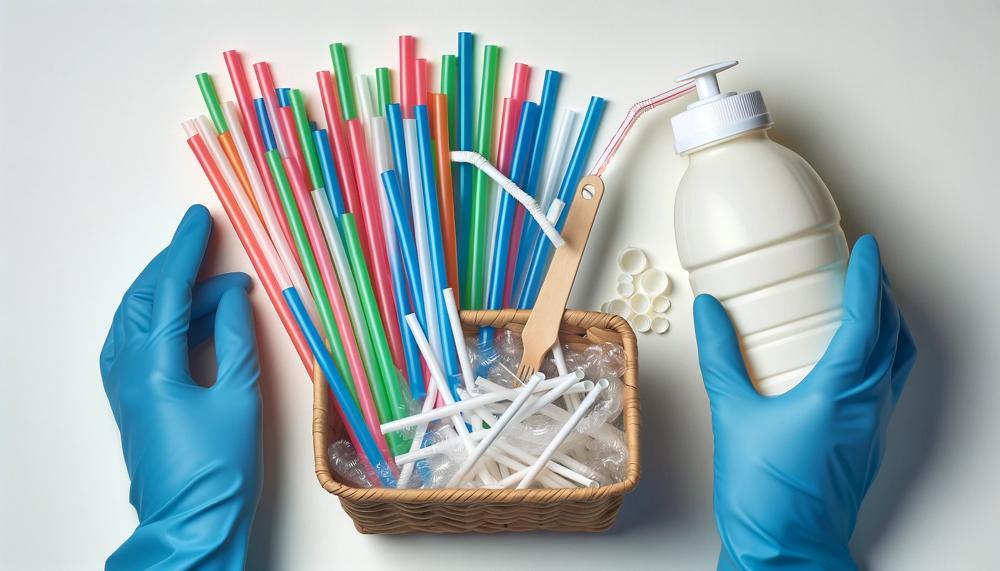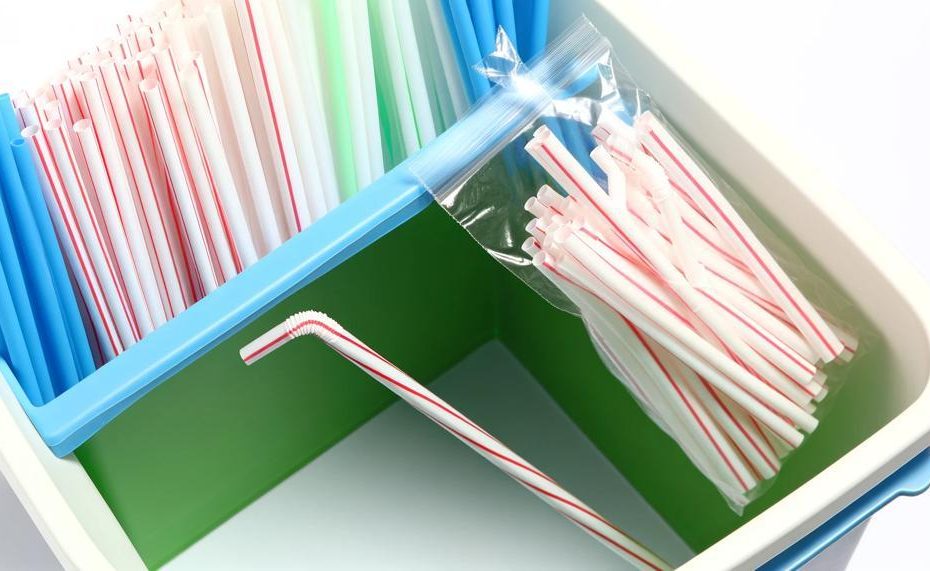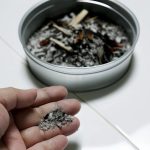Every day, millions of plastic straws are used and discarded, contributing significantly to environmental pollution. Surprisingly, a single plastic straw can take over 200 years to decompose, underscoring the urgent need for proper disposal methods.
In the swirl of our daily coffee rituals and fast-food habits, plastic straws have emerged as silent perpetrators of environmental harm. These seemingly insignificant tools are a major source of plastic waste, affecting marine life and ecosystems around the globe. As public consciousness rises, so does the push for effective disposal and alternatives that can mitigate their ecological footprint.
This blog post aims to shine a light on how to dispose of plastic straws properly, ensuring they do less harm to our planet.

Key Takeaways:
- Check Recyclability: Not all plastic straws can be recycled. Verify with local facilities to see if they can be included in your recycling efforts.
- Opt for Reuse: Clean and reuse plastic straws multiple times to extend their life and reduce waste.
- Cut Before Disposal: If disposal is inevitable, cut straws into smaller pieces to prevent them from being ingested by wildlife.
- Explore Alternatives: Consider sustainable alternatives like bamboo, stainless steel, or glass straws.
Join us as we delve deeper into these methods, offering you practical advice and innovative solutions to tackle this pressing environmental issue.
With the right knowledge and tools, we can all play a part in creating a cleaner, healthier planet.
Contents
Why are Plastic Straws bad anyway?
Plastic straws contribute to environmental degradation in several significant ways. These impacts span across both land and marine ecosystems and are exacerbated by inadequate disposal methods.
| Impact | Explanation | Consequence |
| Persistence in the Environment | Plastic straws are made from polypropylene, a type of plastic that is not biodegradable. They can take up to 200 years to decompose. | Longevity in the environment leads to accumulation in landfills and natural habitats, posing long-term pollution challenges. |
| Wildlife Harm | Marine animals, including turtles, birds, and fish, often mistake plastic straws for food, leading to ingestion and entanglement. | Ingestion can be fatal, causing internal injuries or starvation. Entanglement can lead to restricted movement, injury, or death. |
| Toxic Chemical Release | As plastic straws degrade, they leach chemicals into the environment, which may be toxic to wildlife and ecosystems. | These chemicals can contaminate soil and waterways, affecting both wildlife and human health through the food chain. |
| Resource Drain | The production of plastic straws requires petroleum, energy, and water, contributing to depletion of natural resources and carbon emissions. | Exacerbates resource scarcity and contributes to global climate change. |
Proper disposal is paramount to mitigating these impacts. Here’s why:
- Recycling plastic straws, where facilities exist, prevents them from entering natural habitats and reduces the demand for virgin plastic production.
- Cutting up straws before disposing of them can prevent wildlife from becoming entangled or ingesting them whole.
- Using alternatives like bamboo, stainless steel, or glass straws lessens the reliance on single-use plastics, thereby reducing overall plastic waste.
Educating the public about these disposal techniques is essential to encourage responsible behaviors that align with environmental conservation efforts.
Why can’t Plastic Straws be Recycled?
Plastic straws present significant challenges for recycling systems due to their small size and lightweight nature. Here’s a straightforward breakdown of the factors that make plastic straws unrecyclable and how proper disposal can mitigate environmental risks:
- Size and Weight: Plastic straws are often too small and light to be sorted correctly by the mechanical sorting systems used in many recycling facilities. They fall through sorting screens and can end up contaminating recycling loads or damaging recycling equipment.
- Material Type: While plastic straws are made from polypropylene, which is technically recyclable, the quality of plastic often degrades during the recycling process. This degradation makes the recycled material less valuable and often unusable for producing new products.
- Contamination: Straws are frequently used for drinking and can be contaminated with liquids and other residues, which complicates the recycling process. Many recycling facilities require materials to be clean and free of food waste, which is often not the case with used straws.
- Lack of Uniformity: Different manufacturers use different types of plastics and additives for straws, which can vary widely in recyclability. This lack of standardization complicates the recycling process as specific procedures are required for different materials.
To reduce the environmental impact of plastic straws, proper disposal methods can be employed. Below is a table detailing recommended disposal practices for plastic straws and the resulting benefits:
| Disposal Method | Implementation | Environmental Benefit |
| Recycling with Precautions | Collect in a larger Type 5 plastic container before recycling. | Ensures straws don’t fall through sorting machines, improving recycling effectiveness. |
| Using Alternative Materials | Opt for paper, bamboo, or stainless steel straws. | Reduces plastic waste and dependency on non-renewable petroleum-based products. |
| Educational Campaigns | Promote awareness of straw pollution and encourage reduction. | Shifts public behaviour towards sustainable practices and reduces overall consumption. |
How to Properly Recycle Plastic Straws (Easily)
Recycling plastic straws, although technically possible, requires a specific approach due to their size and flexibility, which often causes them to be mishandled in standard recycling facilities.
Here’s a straightforward guide on how to recycle plastic straws effectively:
| Method | Description | Action |
| Local Guidelines | Confirm recycling acceptance of plastic straws. | Check with local waste management. |
| Repackaging Method | Group straws in a larger plastic container. | Collect, clean, and repackage straws. |
| Specialized Programs | Seek out targeted recycling initiatives. | Search for programs in your area. |
| Reduce and Reuse | Minimize use, switch to reusable options. | Opt for sustainable straw alternatives. |
Other (Better) ways to Solve the Plastic Straws Problem
To tackle the issue of plastic straw waste more effectively and sustainably, consider the following multifaceted approaches:
- Policy and Regulation Enhancements: Local and national governments can implement policies that outright ban single-use plastic straws or heavily tax their usage. Such regulations push businesses towards more sustainable practices and encourage innovation in alternative materials.
- Innovations in Biodegradable Materials: Scientists and companies can focus on developing fully biodegradable and environmentally friendly alternatives to plastic straws. Materials such as polylactic acid (PLA), derived from corn starch, or other compostable materials could offer the same functionality without the environmental toll.
- Education and Awareness Campaigns: By educating the public about the environmental impact of plastic straws through campaigns, more people can make informed choices. Schools, organizations, and influencers can play significant roles in these initiatives, spreading knowledge and encouraging the adoption of sustainable practices.
- Community-Based Initiatives: Community-driven projects like local clean-up days and straw-free challenges engage individuals and businesses in reducing straw use. These initiatives foster a collective sense of responsibility and community engagement in sustainability efforts.
- Technology and Recycling Solutions: Investing in technology to improve the recycling of plastic products can significantly reduce their environmental impact. Innovations that allow for easier and more cost-effective recycling of plastics like straws could rejuvenate current recycling processes.
Should we Ban Plastic Straws?
Banning plastic straws is a step towards addressing environmental issues caused by single-use plastics, but it’s crucial to understand both the intended and unintended consequences. The positive outcome of such a ban is evident in reducing plastic waste and its harmful impacts on marine life and ecosystems.
However, it might also lead to overlooking broader systemic solutions needed for the plastics pollution crisis.
Banning plastic straws alone won’t solve the wider problem of plastic pollution, as they make up only a small fraction of the total plastic waste. It could give the false impression that significant progress is being made, which might slow down the push for more comprehensive environmental policies.
To manage the disposal of plastic straws effectively, we need robust alternatives and improved waste management systems. Here’s how we can deal with plastic straw waste:
- Recycling: Enhance recycling programs to process plastics that can be recycled, ensuring plastic straws are made from recyclable materials.
- Biodegradable Alternatives: Invest in research and development of biodegradable and compostable straw options.
- Education Campaigns: Conduct educational campaigns to increase public awareness about the impacts of plastic waste and the importance of proper disposal.
- Community Initiatives: Encourage community-driven initiatives for waste collection and management, particularly in areas with high usage of plastic straws.
Conclusion
Each day, as countless plastic straws weave through our daily routines, they leave an indelible mark on our planet. Unseen yet pervasive, these small plastics wreak havoc on ecosystems and marine life, their impacts resonating across our environment for centuries.
In navigating the labyrinth of plastic pollution, understanding proper disposal practices becomes not just helpful, but essential for fostering a sustainable future.
To mitigate the environmental onslaught of plastic straws, we must first discern their recyclability. Many local recycling programs do not accept them due to their size and material makeup, yet there are ways to ensure they don’t become a menace to wildlife. Cutting straws into smaller pieces before disposal can prevent tragic encounters in natural habitats. Better still, cleaning and reusing these straws reduces waste directly at the source.
However, the beacon of hope lies in alternative materials—bamboo, stainless steel, glass—that offer lasting solutions without sacrificing the earth. As we pivot towards these sustainable options, we embrace a dual responsibility: protecting our natural world and educating others to do the same.
Through collective action and informed choices, we can unravel the tangled impacts of plastic straws, transforming our environmental footprint from one of harm to one of harmony.





